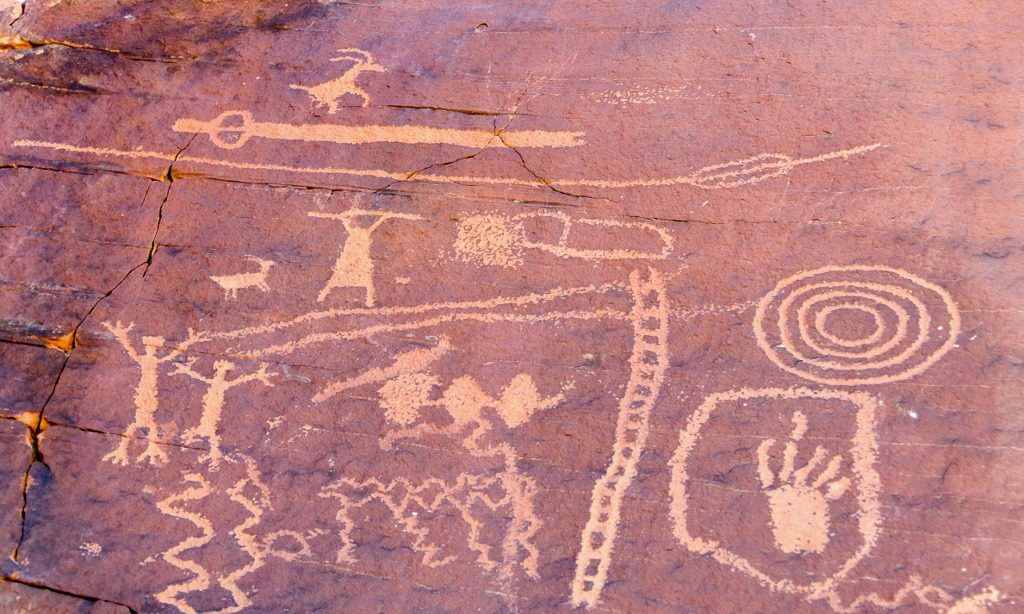The Enigmatic Canyon Petroglyphs of North America
The canyon petroglyphs of North America are one of the most enigmatic examples of ancient rock art in the world. They often depict strange anthropomorphic figures, the so-called “Ant-People” of the Native American’s mythology and legends, who are pictured as giant beings.
There have been dozens of theories about them, ranging from the visual representation of shamanic psychedelic visions to actual extraterrestrial beings being depicted.
Sego and Horseshoe Canyon Petroglyphs
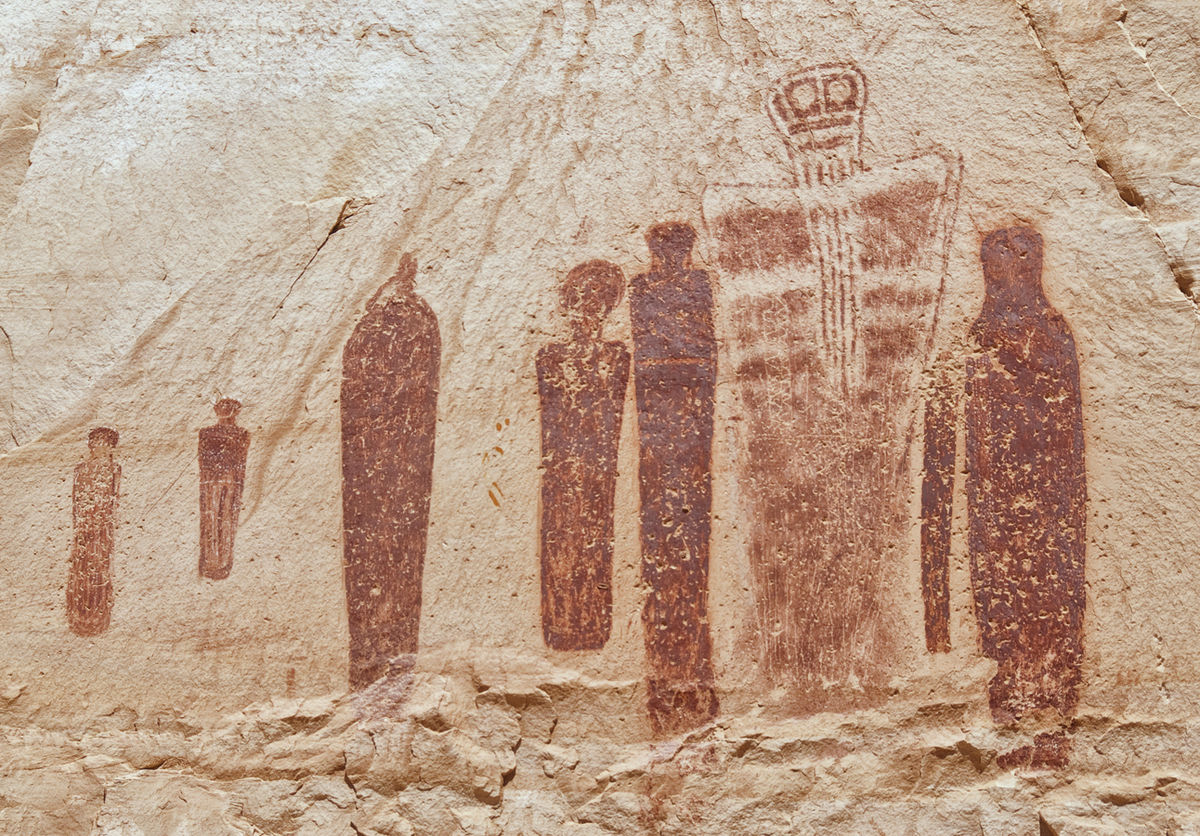
The sandstone cliffs of Sego Canyon are a spectacular open-air art gallery of petroglyphs painted and sculpted by Native American peoples about eight thousand years ago.
They are characterized by more than 80 imposing and eerie life-size figures, with sunken or missing eyes and there is a frequent absence of arms and legs.
They’re so strange that many argue that the mysterious figures are evidence of the alien visit in our ancient past, while scholars argue that the strange beings represent shamanic visions produced in trance states.
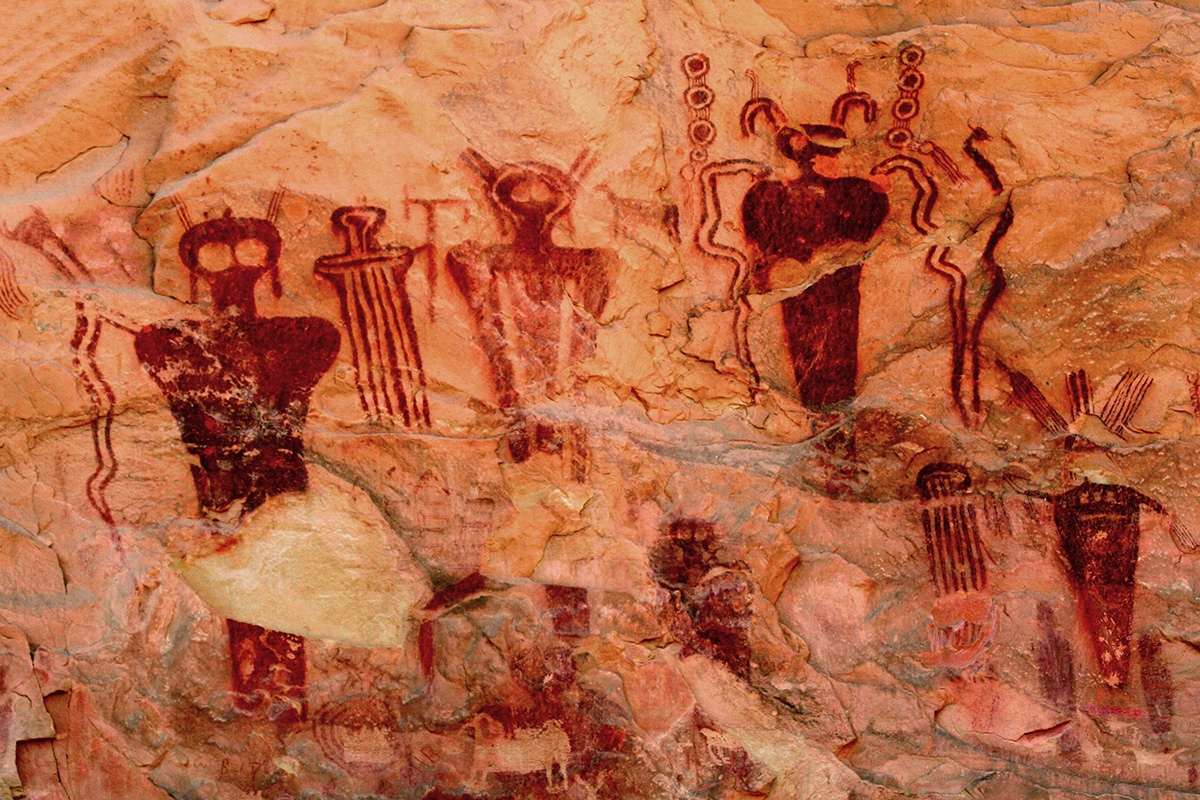
Evidence of human settlement in Sego Canyon dates back to the Archaic period (6000 – 100 BCE).
But later the Anasazi, Fremont, and Ute tribes also left their mark on the territory, painting and carving their religious visions, clan symbols, and recordings of events in the rock faces.
The rock art of Sego Canyon can be characterized according to several distinctive styles and periods of time.
The oldest art belongs to the archaic period and dates between 6,000 BC. and 2,000 BCE, and some of the most spectacular examples of rock art in the Southwest are attributed to archaic peoples.
Within the Archaic period and beginning about four thousand years ago, we see Barrier Canyon style rock art, a distinctive style of art that appears mostly in Utah, with the largest concentration of sites around San Rafael Swell and Canyonlands National Park, but the range extends across much of the state and into western Colorado.
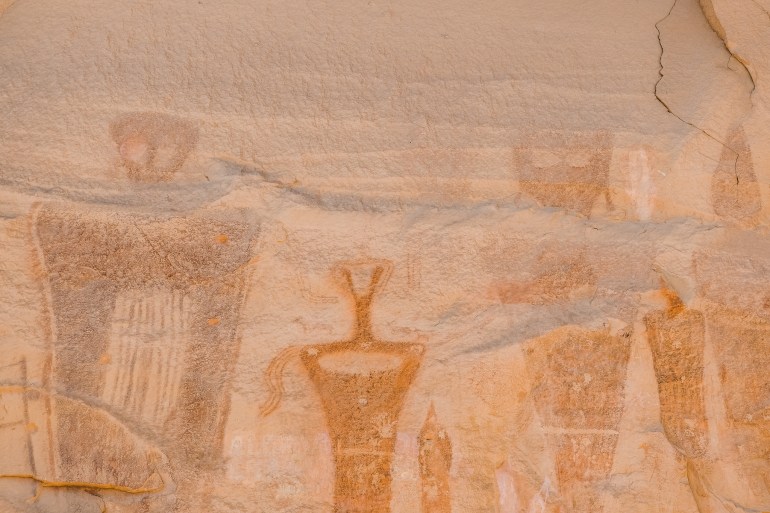
The rock art panels in the Canyon Barrier style are mostly pictographs (painted), but there are also several petroglyphs (engraved).
Rock art in the Canyon Barrier style is characterized by large anthropomorphic forms, some almost three meters high. The characteristics that identify them are a blank look or missing eyes, the frequent absence of arms and legs, and the presence of markings on the vertical body.
They are sometimes seen with antennae, earrings, and snakes in their hands, a common symbol to many of the ancient cultures of our remote past.
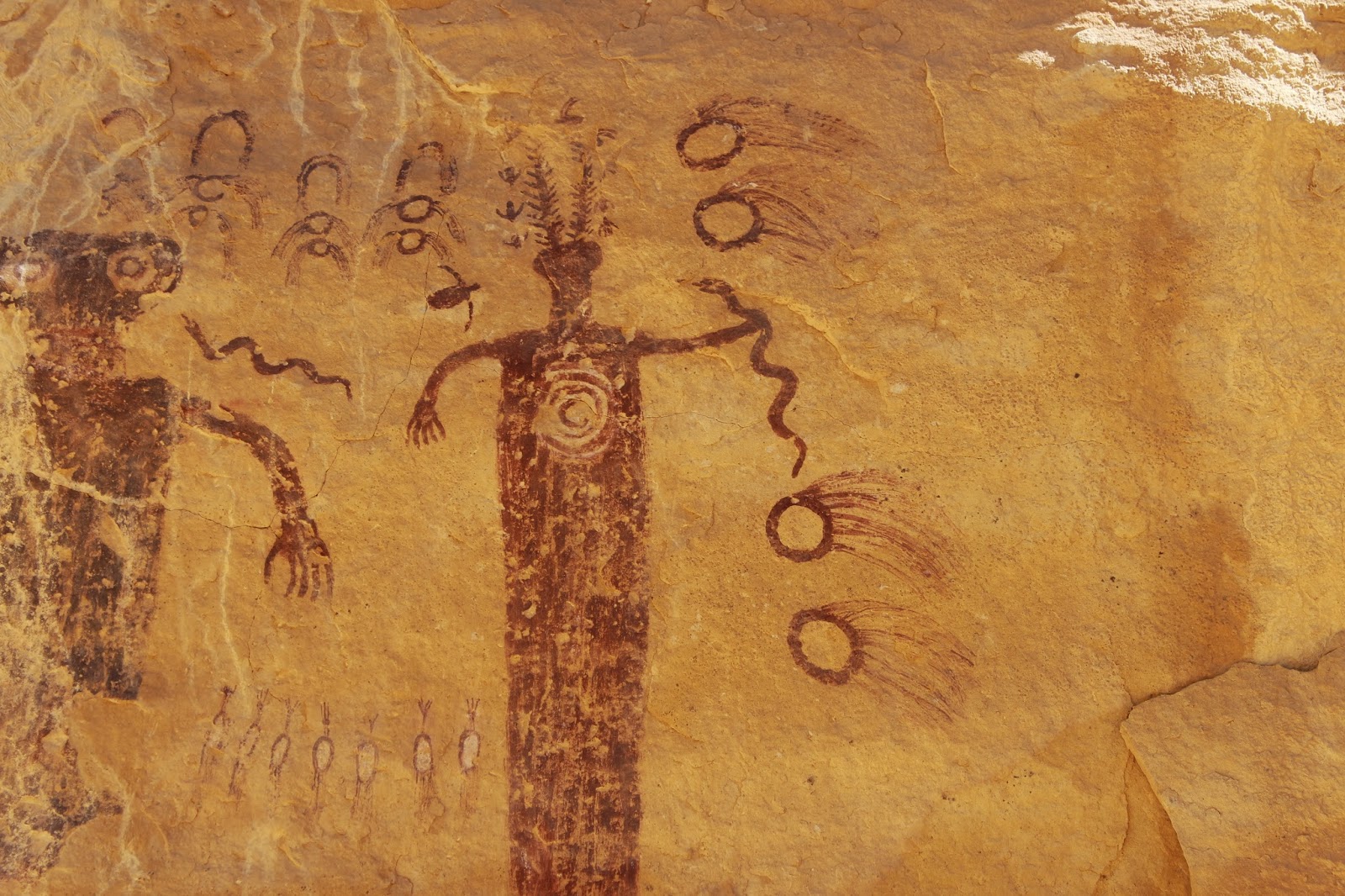
Ghost-like images are some of the more unusual forms of rock art seen in the area. One of the most famous images, known as the Canyon Barrier Guru, appears to represent a certain type of spirit figure, which is larger and more important than the figures surrounding it.
The Holy Ghost panel of the Great Gallery has been dated to between 400 A.D. and 1100 A.D. by dating two rockfall events of which one exposed the rock face the panel on which it was made and the second damaging part of the panel.
The Fremont had a complex social structure, as illustrated in the art they carved on the rock, and were highly capable of adapting to the extreme variations of their environment.
The figurines are painted with large rectangular-shaped bodies and small heads, similar to those produced by the Anasazi.
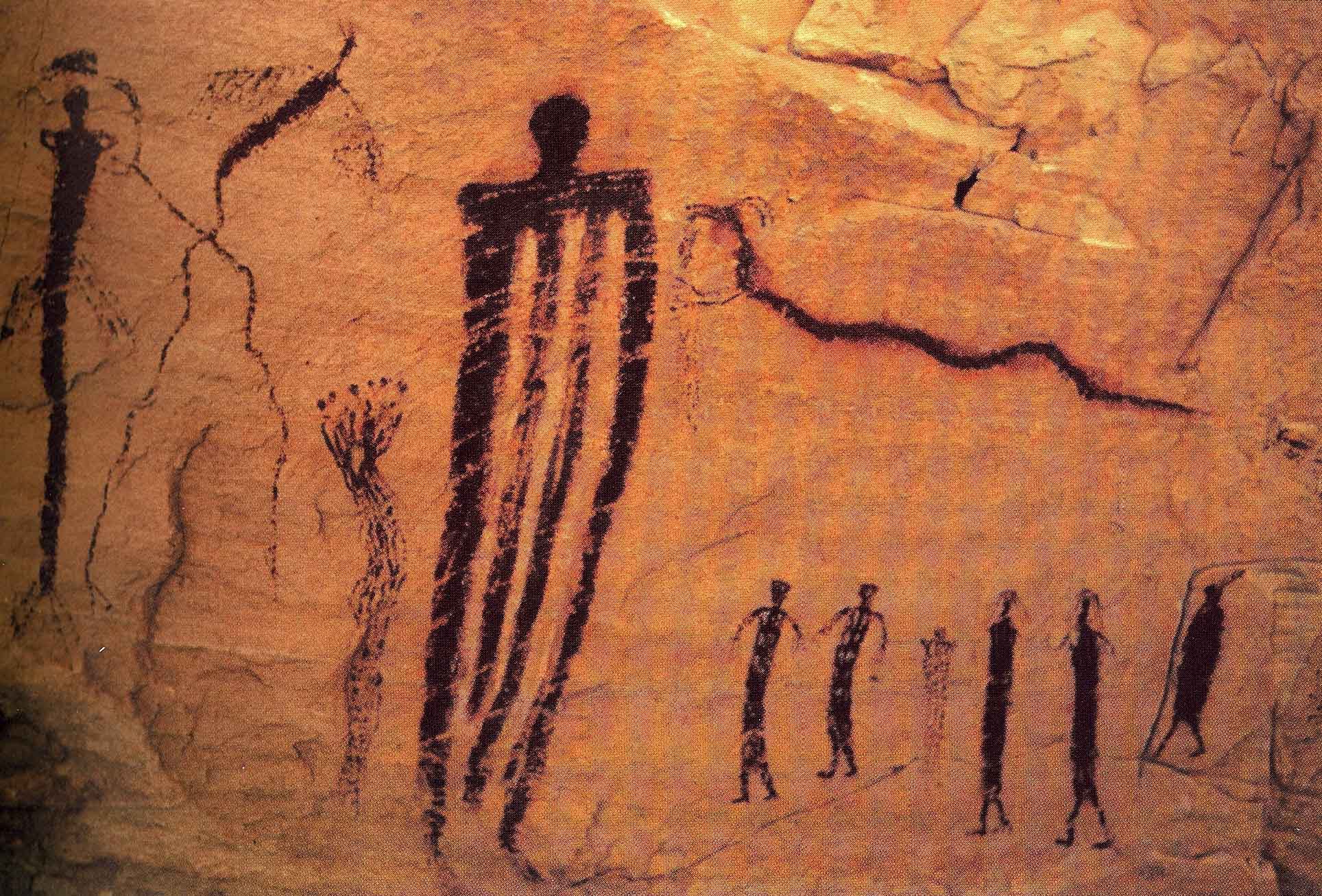
Human presence in Horseshoe Canyon has been dated as far back as 9000-7000 BCE when Paleo-Indians hunted large mammals such as mastodons and mammoths across the southwest.
Later inhabitants included the Desert Archaic culture, the Fremont culture, and Ancestral Puebloans. Occupation by the Fremont and Ancestral Puebloans was relatively brief; it is believed that the canyon was abandoned by Native American peoples by 1300 A.D.
The Great Gallery is one of the largest and best-preserved collections of Barrier Canyon Style rock art.
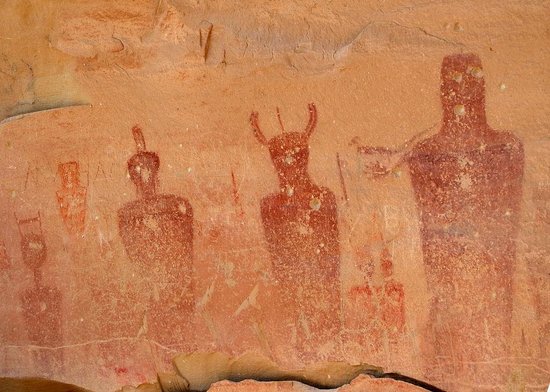
The gallery was a product of the Desert Archaic culture, a nomadic group of hunter-gatherers predating the Fremont and Ancestral Puebloans.
The panel itself measures about 200 feet (61 m) long and 15 feet (4.6 m) high. The panel contains about 20 life-sized anthropomorphic images, the largest of which measures over 7 feet (2.1 m) tall.
A Works Projects Administration produced reproduction of the paintings is located at the Natural History Museum of Utah.

On the other hand, the more recent creations have been carved into the rock and seem to overlap the older ones.
The impression is that the ancient artists wanted to surround the most ancient sacred entities with scenes of daily life, such as hunting and village life, as a good omen and a request for divine protection.
Is it possible that the Sego Canyon petroglyphs are yet another example of this phenomenon so widespread on planet Earth? At the moment, nobody knows for sure what the pictures represent or why they were painted.
Petroglyph Canyon
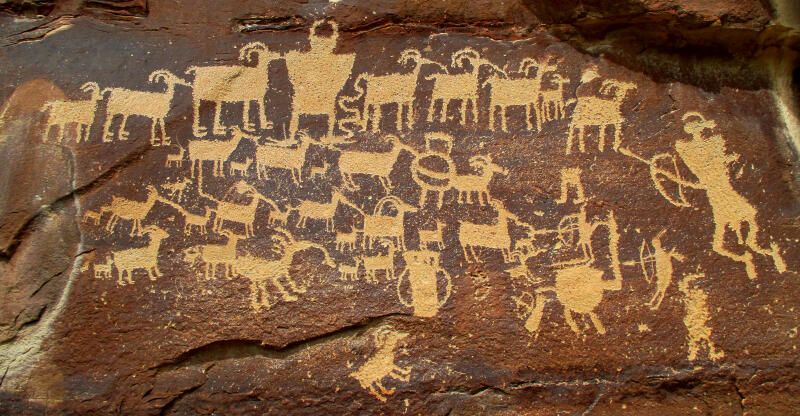
Petroglyph Canyon is an archaeologically significant canyon in the northwestern United States. Located on both sides of the border between Montana and Wyoming, the canyon has long been obscure due to its small size. However, it gained substantial attention in the late 20th century because of its numerous prehistoric petroglyphs, and much of it was named a historic site in the 1970s.
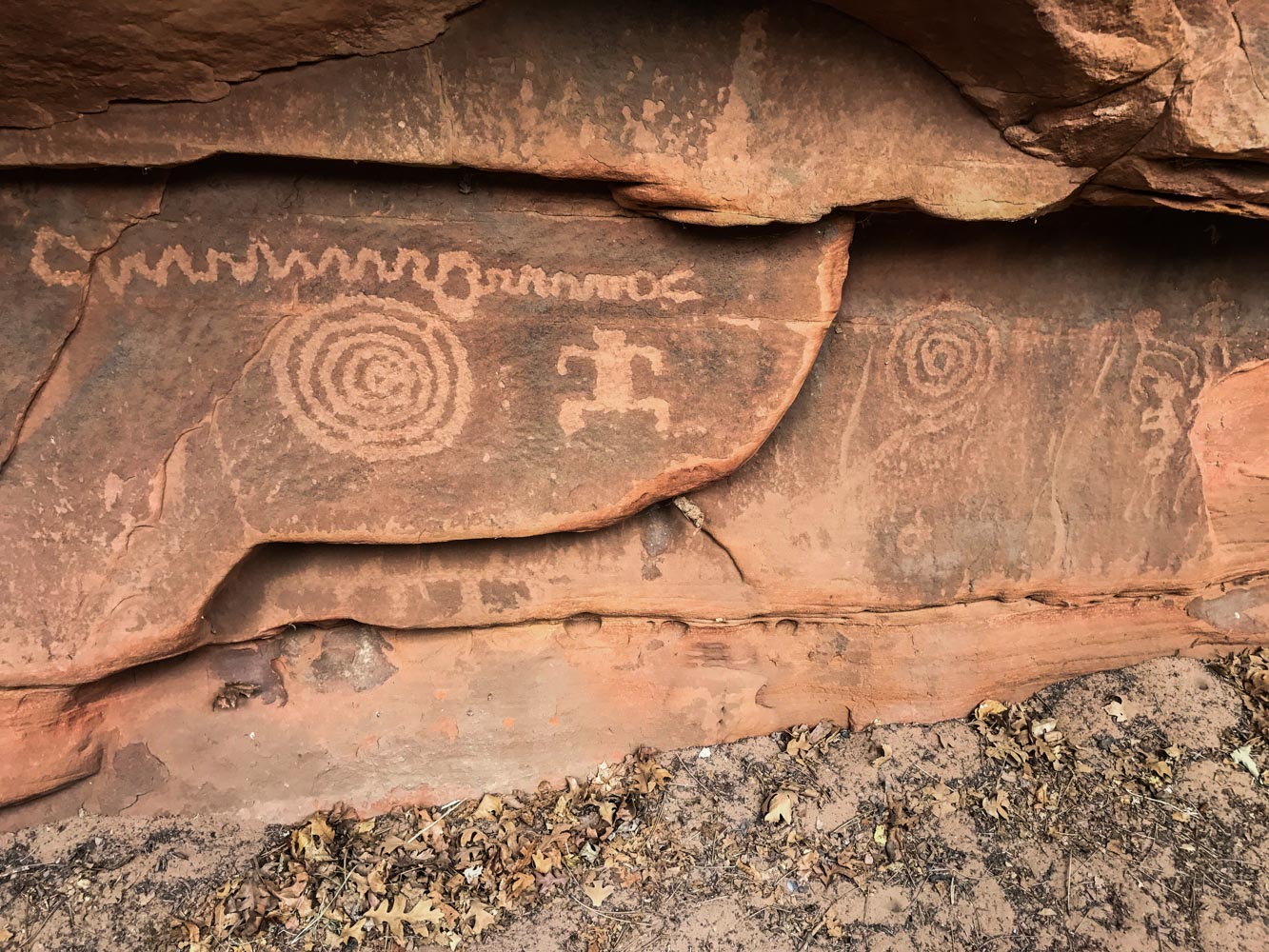
A portion of the canyon measuring approximately 800 feet (240 m) long features numerous prehistoric petroglyphs, both on the canyon walls and boulders. At least eighteen different groups of carvings are known, in addition to features such as hearths and small pieces of stone resulting from the manufacturing process for stone tools. Most of the petroglyphs were created by “pecking” tiny holes, although one group is formed of clearly engraved lines into the rock. The majority of designs at Petroglyph Canyon feature humans or large game animals such as bison and bighorn sheep.
Sloan Canyon Petroglyphs
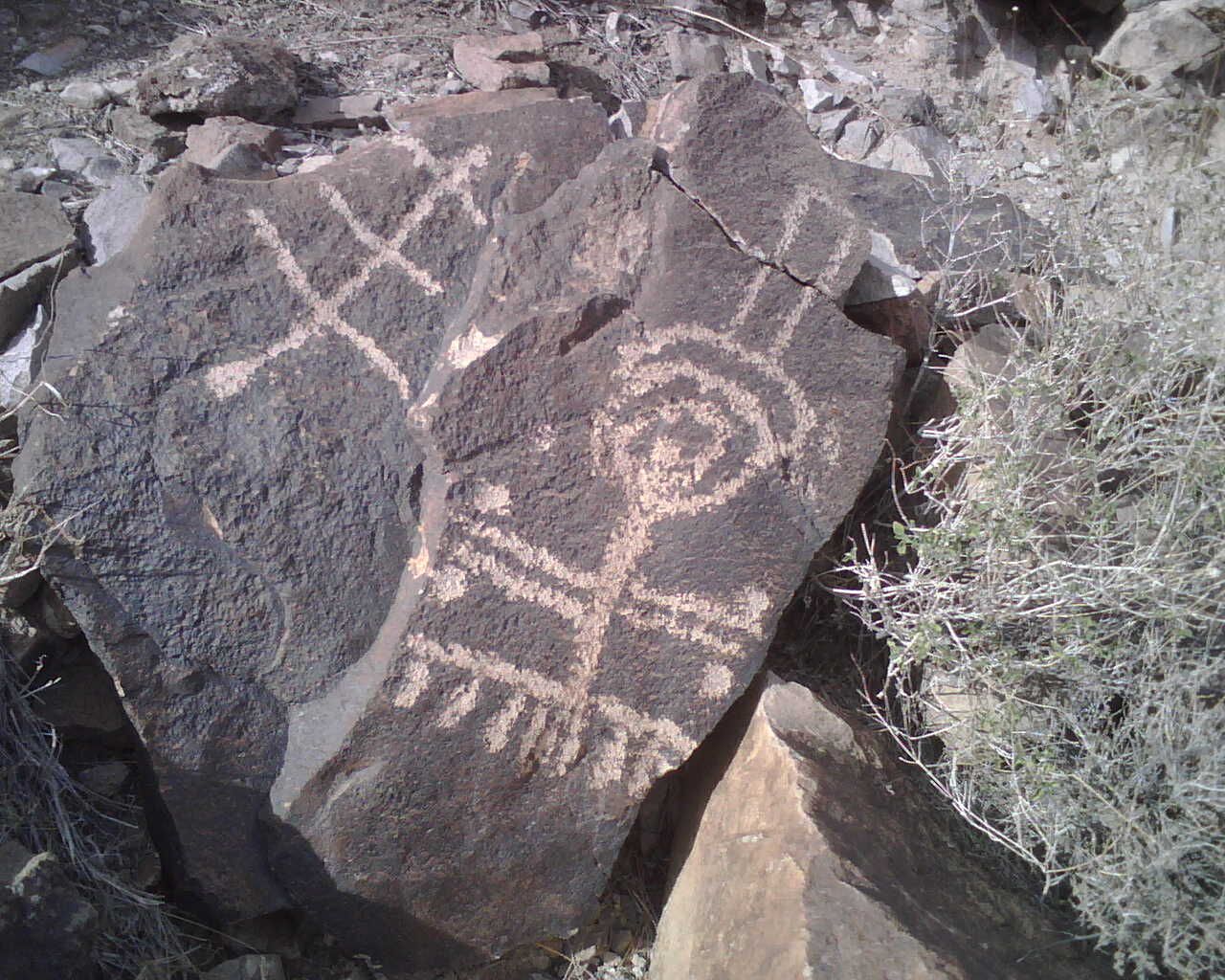
Sloan Canyon contains many petroglyphs and has been called the Sistine Chapel of Native American rock art due to its size and significance. Archaeologists believe the more than 300 rock art panels with 1,700 individual design elements were created by native cultures from the Archaic to historic eras.
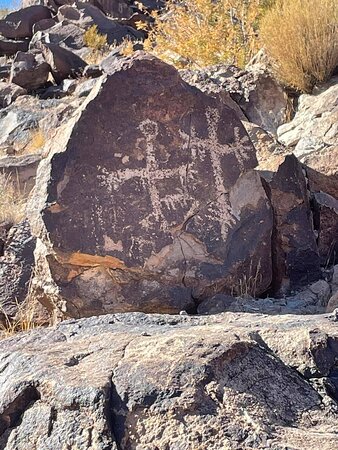
Three Rivers
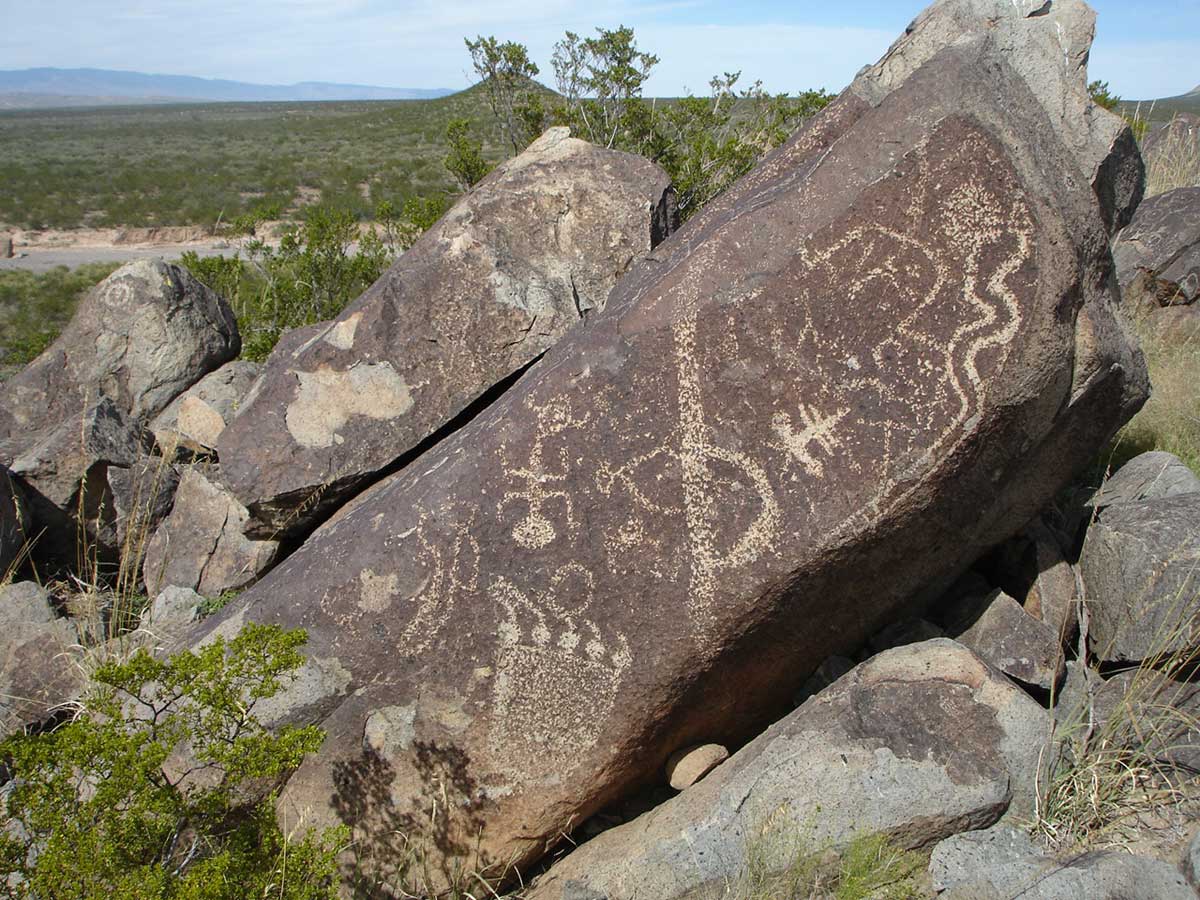
There are over 21,000 petroglyphs at the Three Rivers Petroglyph Site at Three Rivers, New Mexico, located midway between Tularosa and Carrizozo in Otero County on Highway 54.
Many of the petroglyphs can be easily viewed from a trail open to the public which winds through the rocks for about one mile.
The petroglyphs are thought to be the product of the Jornada Mogollon people between about 1000 and 1400 AD.
However, many believe that they might be much older and that they allegedly represent supernatural beings or even extraterrestrial beings.
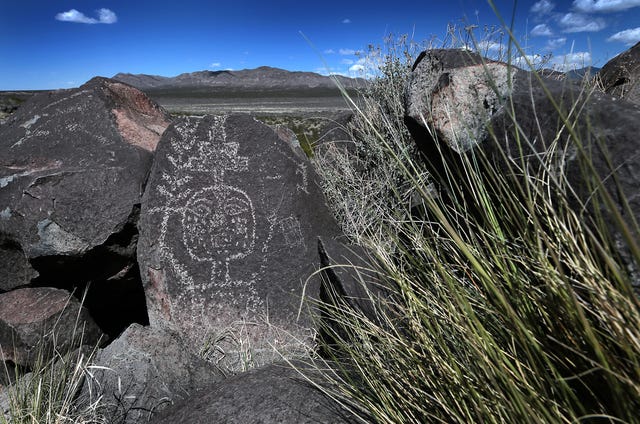
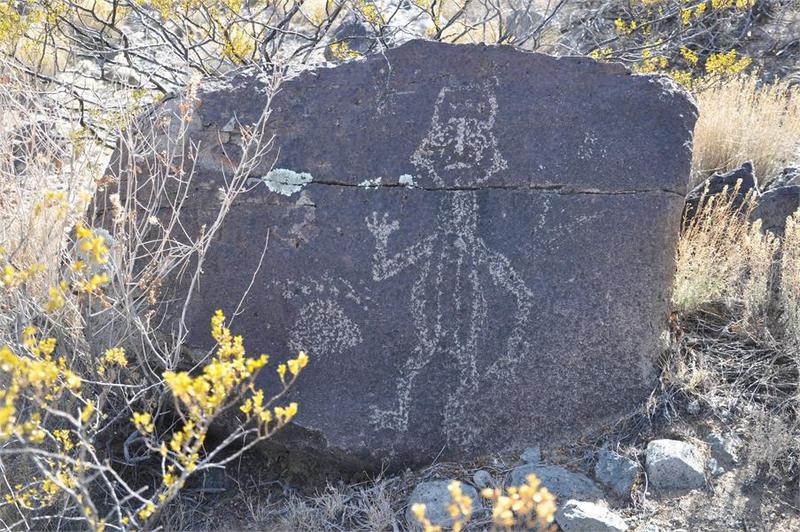
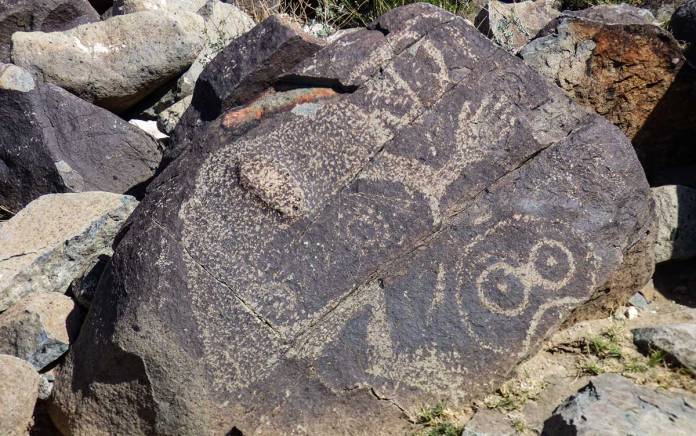
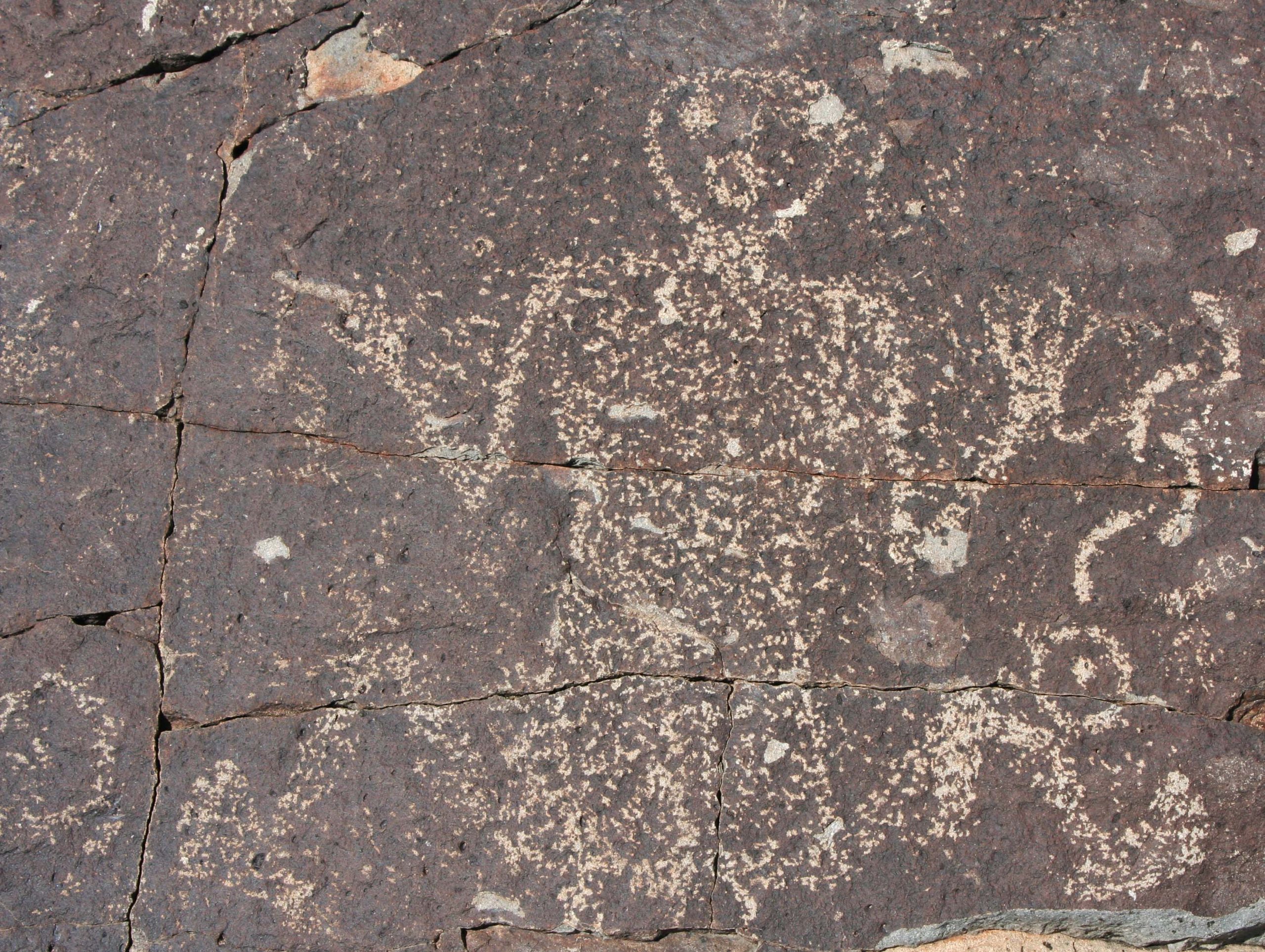
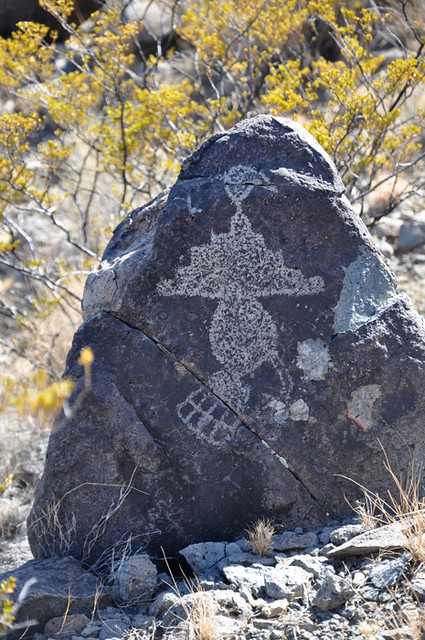
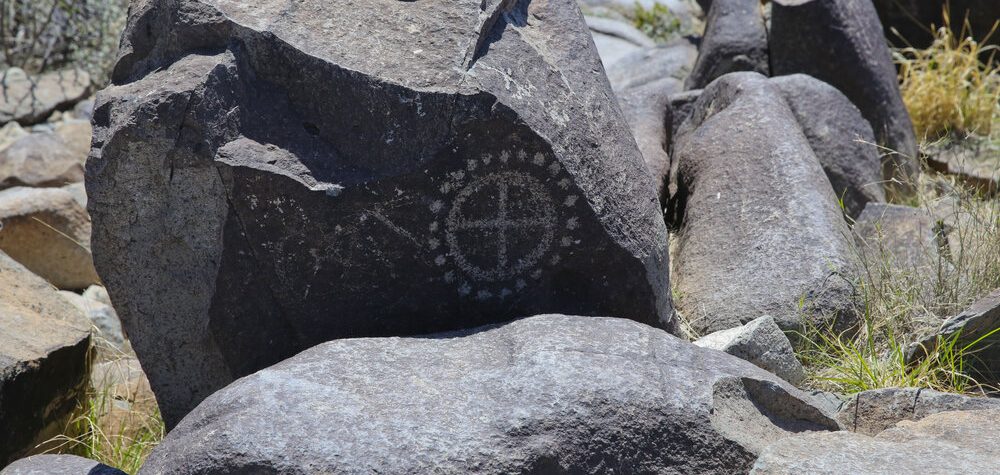
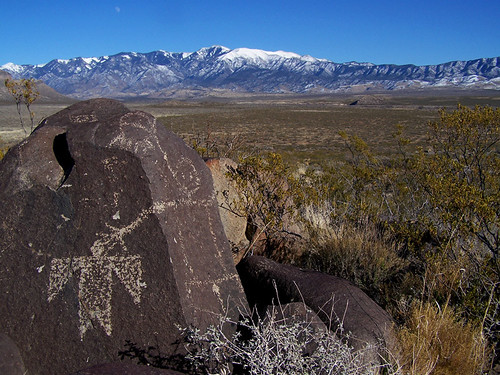
The petroglyphs at Three Rivers were recorded during a six-year project by the Archaeological Society of New Mexico‘s Rock Art Recording Field Schools. Photographs and records are on file at the Bureau of Land Management‘s District Office in Las Cruces.
Valley Of Fire
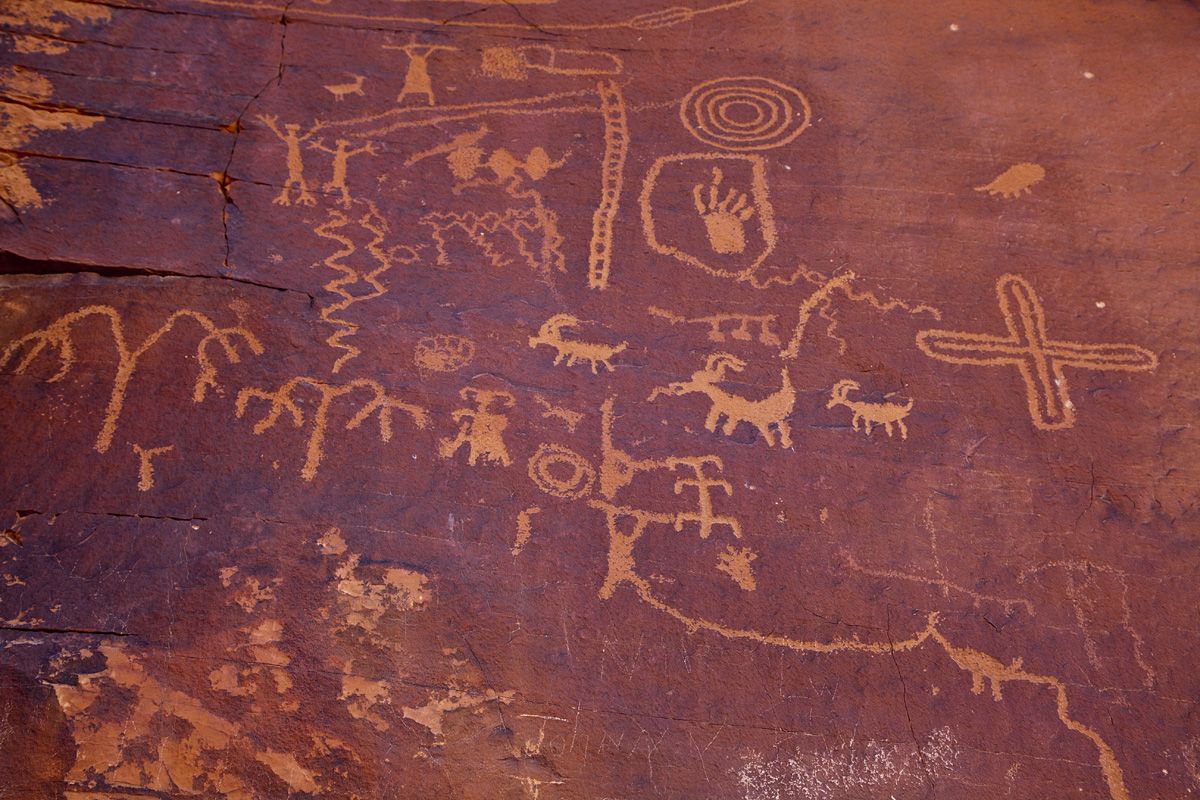
Prehistoric inhabitants of the Valley of Fire also included the aforementioned Anasazi, who were farmers from the nearby fertile Moapa Valley. Their approximate span of occupation has been dated from 300 BC to 1150 AD.
Their visits probably involved religious ceremonies, although scarcity of water would have limited their stay. Fine examples of rock art left by these ancient peoples can be found at several sites within the park.
A theory proposed about this particular panel is that it may represent a cataclysm, a flood specifically, which is also an element of Native American’s mythology and religious account, a similarity shared with many other religions and beliefs.
According to this theory, the wave patterns should be in fact water, the people with their hands above are seeking help, and there are also two dead trees to symbolize destruction and a stair to climb to escape the flood.
According to the tradition, Native Americans believed that few of their ancestors were able to survive the flood sent on earth by the gods by fleeing to the highest mountains.
